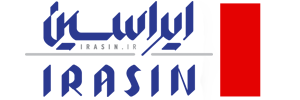According to Irasin, On the third day of the exhibition, a specialized panel titled "Resilience, Investment, and Technology Development in the Circular Economy Outlook for Iran's Mines and Metal Industries" was held with the participation of distinguished figures from various industrial organizations and companies.
Participants in this panel included: Farhad Farshad, Director of Technology Development and Indigenization at IMIDRO; Tayyebeh Salehi, CEO of No'afarinaane Exir Company and Circular Economy Consultant; Ali Ayazi, Director of Investment Development at MIDHCO Holding; Ali Sajedikhah, Head of Market Research Department and Circular Economy Project Leader at Mobarakeh Steel Company; Mohammad Rahmati, Carbon Standards Development and Life Cycle Assessment Expert; and Seyed Tohid Sadrnejad, Head of the Standard, Environment, and Sustainable Development Commission at the Chamber of Commerce.
Operational Approaches to Implementing the Circular Economy in Iran's Mining and Metal Chain
In this session, practical experiences and strategies for the comprehensive implementation of the circular economy in the country's mining and metal industry were shared. Key discussions covered the use of new technologies, comprehensive life cycle assessment, redefinition of raw materials and waste, increasing material efficiency, utilization of secondary resources, policy opportunities under the Seventh Development Plan, and legal and environmental challenges.
Ali Sajedikhah noted the novelty of the circular economy concept globally and the initial legislation enacted by the European Union in 2019, emphasizing that the country's industries have a significant gap with foreign counterparts in some indicators, such as material efficiency. However, he stressed that there is considerable capacity for the reuse of materials previously considered waste.
He pointed to rising energy costs and environmental pressures, stating: "The increase in the price of energy carriers and stringent international regulations, such as the carbon tax and EU laws, compel us to seriously pursue the path of the circular economy."
Water Supply Challenges and the Necessity of Sustainability
Sajedikhah highlighted serious limitations for industries in water supply and mentioned that Mobarakeh Steel is utilizing massive water transfer projects from the Sea of Oman to meet its water needs, which underscores the necessity of implementing circular economy principles to maintain sustainable production.
Mobarakeh Steel's Circular Economy Roadmap
He introduced three main keywords for transformation in the steel industry: changing the business model, processes, and logistics, predicting that businesses will move toward offering services and product rentals, such as leasing steel sheets to automakers with a commitment to recycling.
Mobarakeh Steel, by modeling global experiences and aligning with the World Steel Association, began its move toward a circular economy in 2022 (1401 SH) and has set specific goals, such as 30% recycling and reduction of pollutants by 2031 (1410 SH), and achieving carbon neutrality by 2049 (1428 SH).
Circular Economy and Green Steel: A Necessity for Sustainable Development
Mohammad Rahmati, Carbon Standards Expert, also detailed relevant international standards for the circular economy, emphasizing that these standards ensure the transition from linear to circular models and the measurement of performance.
He announced that Mobarakeh Steel was the first Iranian company to receive two reputable international carbon standards and warned that failure to comply with carbon requirements could restrict access to global markets.
National Outlook and Sustainable Future
This event and specialized panel highlighted the key role of the circular economy in ensuring the competitiveness and environmental responsibility of Iran's mineral and steel industries. With intensifying international regulations, companies like Mobarakeh Steel have charted a clear path for sustainable development, innovation, and improved productivity, which plays a crucial role in maintaining Iran's position in the global value chain.


ارسال نظر